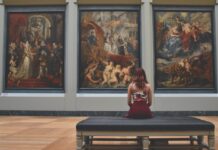
Those who love and admire the Abstract expressionism art movement, very well know who Jackson Pollock is. He’s an American painter who is one of the most crucial painters of the twentieth century and one of the best American painters to ever thread this planet. Although he died relatively young, at the age of 44, Jackson Pollock managed to leave some amazing and jaw-dropping creations behind himself.
Jackson Pollock is also known as Jack the Dripper, due to his unique style of painting called drip painting. If you’re up for some unique art style, prepare to be blown out by Jackson Pollock’s magnum opus paintings.
Best Jackson Pollock Paintings
Number 5, 1948
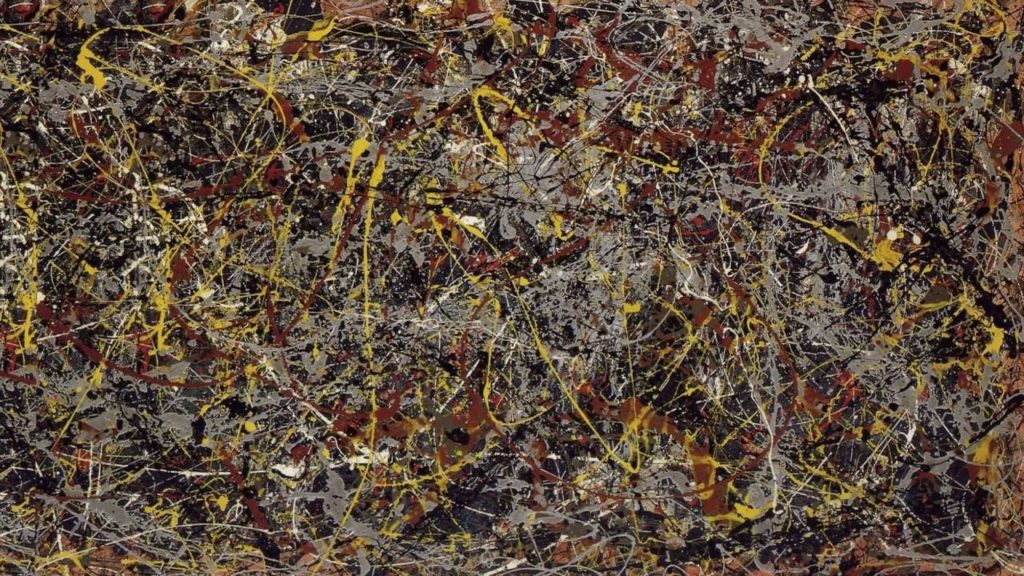
Number 5, 1948 is the most popular and the most expensive Jackson Pollock painting. Back in November 2016, the picture raised the bar so high, that it set the world record for the highest price paid for a painting. The buyer had to pay $140 million for an eight-by-four-feet picture! In 2015, this picture got a fifth place on the list of the most expensive pictures ever, which made it the most popular picture by this artist. Needless to say, this picture represents a prime example of Jackson’s drip painting and is also an epitome of Abstract expressionism by many artists and critics.
Number 11, 1952 – Blue Poles
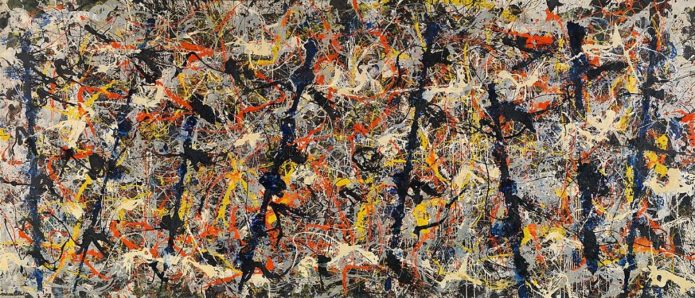
If you don’t know this picture by the Number 11 name, you probably know it as Blue Poles. When you take a look at the picture, you can clearly see blue poles, which makes you realize why the name was given. However, Dennis Phillips, a famous art historian said that looking at the blue poles refracts the attention from the rest of the picture, doing it a great disservice. Like Number 5, this picture is very expensive, although not as close as the aforementioned picture. The National Gallery of Australia purchased it for $1.3 million in 1973. Even though the money had a different worth back then, it’s still a lot of money for a picture – not for Pollock’s picture, though.
One: Number 31, 1950
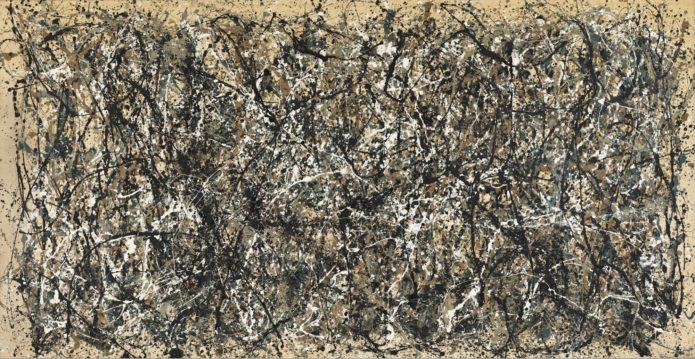
One: Number 31 represents a pinnacle of Jackson’s drip technique, as it’s painted around the time when he mastered it. Jackson painted this picture on a canvas lying on the floor, making for the biggest Pollock’s painting ever and among the biggest arts ever created by painters. As numerous fans say, this picture is a school example of Jackson’s skill and dexterity, which proved that Jackson is indeed the greatest drip painter ever.
Mural, 1943

Painted in 1943, Mural is one of the first major paintings by Jackson Pollock. This picture, aside from its display of sheer technicality and skill, also represented a turning point in Jackson’s career, giving a new dimension to his already amazing artistry. For a freshly-baked painter, this picture was quite large and was painted on an 8-by-20-foot canvas. Needless to say, it’s among the biggest paintings he ever made, accompanied by the aforementioned painting. As Clement Greenberg, a famous art critic, says, this picture made him realize that he’s the best painter America ever had, setting the stage and the mood of his later work.
The Deep, 1953
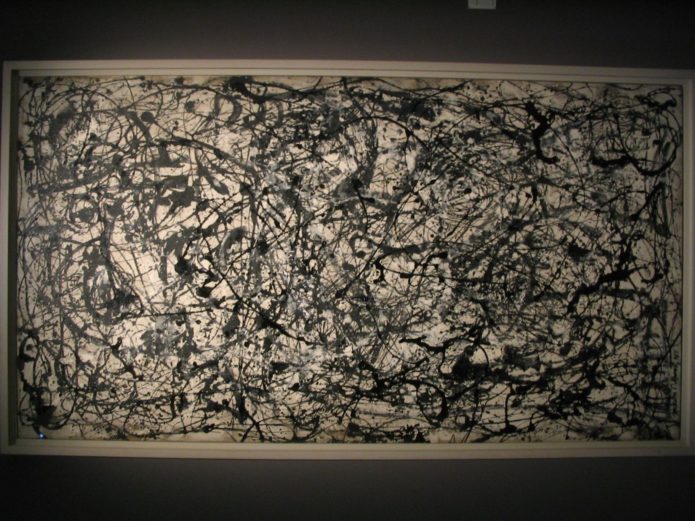
From the aesthetics standpoint, The Deep is vastly different from Pollock’s previous work and is one of the last pictures he painted, three years before his death. Color-wise, this picture isn’t very rich. It’s a combination of black and white, with some yellow and blue around the edges. Despite being out of his prime years (1947-1950), this is one of the most important Pollock’s pictures that enriched Abstract expressionism and made it a concrete art style. Even the name of this photo is mysterious because no one knows what it means. Judging by the photo, some say that it’s a part of the person’s brain which he’s too afraid to face, hence the name The Deep.
The She-Wolf, 1943
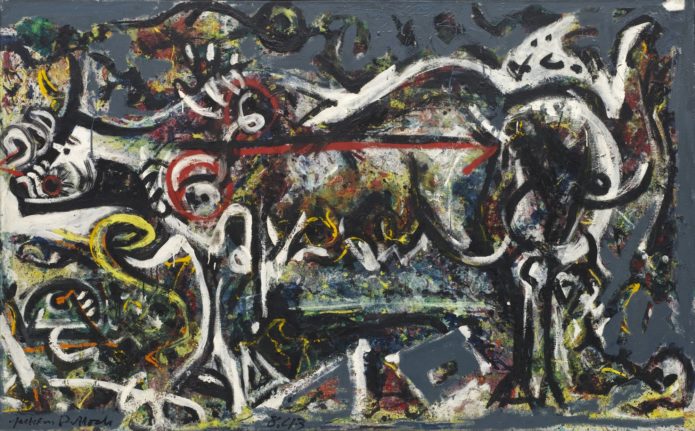
Back in 1943, Jackson wasn’t the most popular drip painter and The She-Wolf represents a gorgeous example of his pre-prime years. It’s not exactly a drip painting, so it’s slightly different than the previous photos we’ve mentioned. The important fact for this picture is that it’s the first Pollock’s work to enter a museum collection, being purchased by the Museum of Modern Art. Some say that this photo is based on the wolf mother of Romulus and Remus, the founders of Rome. However, Pollock never publicly confirmed it. Even to this day, this is one of Pollock’s finest works and will be remembered as the springboard for his further career.
Full Fathom Five, 1947

Full Fathom Five was created at the beginning of Jackson’s drip period that lasted through his prime years. The picture looks very similar to his other work, although the color palette is shifted more towards blue. Jackson did this picture by dripping the paint on the canvas, rather than applying it carefully, which is the definition of drip painting. Since it’s from the beginning of his drip period, it’s one of the prime examples of this technique and as such, its worth is undoubtedly high.
Autumn Rhythm, 1950

Having just mastered the drip technique, Jackson could grace us with masterpieces such as Autumn Rhythm. Just before abandoning his unique style, Jackson made this graffiti-like picture that stands as one of his most original works. Looking at the picture, you can see a little bit of (controlled) chaos, as the colors ranging from white to black, and brown are entwined on a piece of canvas.
Conclusion
Jackson Pollock remains one of the best artists of all time, not just in America. Even in these modern times, Jackson is an inspiration to many artists. We hope that we can one day get an awesome drip painter like Jackson Pollock. Until then, we can only enjoy a plethora of paintings he made for us. Jackson isn’t dead, he’s still living in his drip paintings, somewhere behind the colors.


